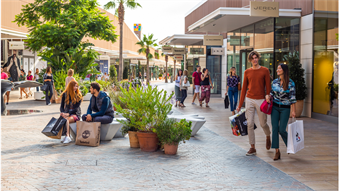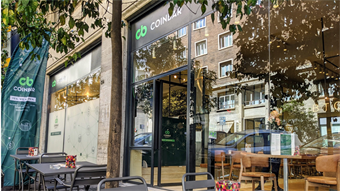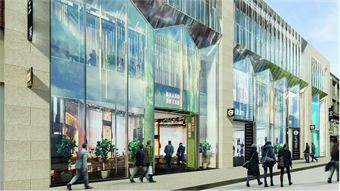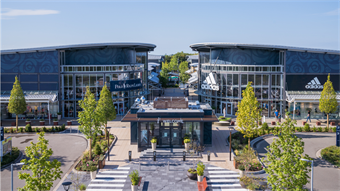A retail state of mind
- In Innovation
- 21:43, 24 April 2018
- 1684 Views
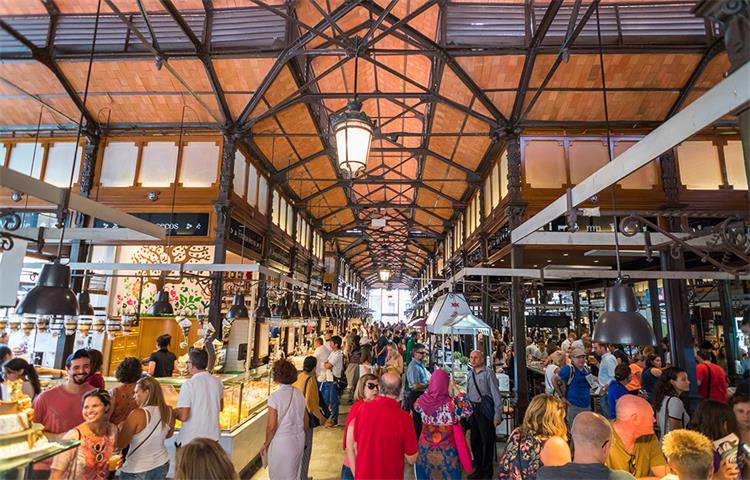
According to Redevco, shoppers have become increasingly demanding in their expectations of retail venues, as they shift from need-to-buy towards need-to-enjoy. Bart Vink, Redevco’s Head of Research & Strategy, explains how to assemble the magic ingredients.
It is 2018 and the function of the shop has changed. According to Redevco, instead of being a place that predominantly facilitates on-the-spot transactions, the store is now a key marketing instrument that allows the consumer to get to know a brand, and its products or services.
Internet is a key driver of the intensifying “experience and convenience” trend and creates a new ‘retail state of mind’ where consumers shift from need-to-buy towards need-to-enjoy. But if that is the case, how do retailers ensure they still seal the deal?
By addressing consumer demands in a more holistic way, emphasising customer engagement and place-making to enable shoppers to create top-notch experiences where they want to spend their time, says Redevco’s head of research & strategy, Bart Vink.
‘Shopping destinations today are about creating places that serve the consumers’ new retail state of mind, which is not about buying in the first place but rather about enjoying,’ explains Vink, ‘so it’s more important than ever that retailers shift their physical retail concept towards consumer experience. People want to collect meaningful memories, so we see ourselves as a developer of that environment, trying to align with retailer demand and create customer engagement.’
Halo effect
According to Vink, the right atmosphere and experience in a physical store environment will trigger overall sales, online or offline. This ‘halo’ effect requires the experiential store to generate brand equity while the online stores, wholesale and outlet stores generate income. Operating stores in the right locations accelerates both brand equity and income generation.
‘We actually see that, with the advent of e-commerce, retailers try to differentiate themselves by providing a shopping experience that cannot be reproduced at home,’ he explains. ‘That means that the physical store remains as important – if not even more so – than it has been in the past.’
‘Shopping destinations are about serving the consumers’ new retail state of mind’
Bart Vink, Head of Research & Strategy, Redevco
It’s a detail which isn’t lost on leading online players, provoking names even as big as Amazon to experiment with physical stores. ‘Amazon have recognised the benefit of opening experiential stores,’ says Vink. ‘It’s no longer a debate on whether you should be on or offline – you need to have both. The question now is where you gain the highest benefits for your online store in having a physical retail space, and how your site can best serve your real-world locations.
‘The drive is towards securing those destinations where consumers want to spend time, giving retailers the highest halo effect. Done the right way, you’re top of mind, and your retail offer perfectly fits the omnichannel network.’
The right city
With the changes in shopping patterns described above, the internet is having an accelerating impact on the polarisation of the retail landscape. Consumers are reducing the number of shopping trips and are becoming more selective about where they go. As a consequence, those retail destinations that cater for modern consumer shopping decisions are attracting greater interest at the expense of the rest. This means that location selection is becoming even more important.
‘The perfect shopping destination involves great retailers, an optimised food and beverage (F&B) offer and leisure options,’ notes Vink, but there are also a number of factors beyond the retail real estate developer’s immediate control.
‘What really matters is what city you’re in,’ says Vink. ‘Apart from economic and demographic factors, it ensures that the retail experience is framed to be truly enjoyable. The experience part of the destination – including historical, cultural and leisure points of reference – are unique to any city. That’s why we created our City Attractiveness Model, to make sure we’re pinpointing the right locations before any investment is made.’
Redevco’s City Attractiveness Model surveys four aspects of urban areas – demographics, economics, the retail property market performance, and city quality. ‘While the first three are important, we take special note of the fourth aspect,’ Vink says. ‘It makes all the difference.’
Building the magic
‘In creating the right experiential offering, we also have a bespoke approach,’ says Vink. ‘You can’t have a blueprint to reproduce a set model of retail, leisure and F&B in all your centres. So we’re trying to look for that special niche, an outstanding location, although form and function vary.
‘If you’re aiming to have a foodhall experience, then the emphasis is much more on quality and variety of food, whereas if you want to have a more diversified environment, just lumping together F&B will not have the right effect. When we talk about micro-locations, it’s about satisfying local demand and tastes in a very individual way, to achieve the right halo magic.’
He adds: ‘We love projects like the Copenhagen and Amsterdam foodhalls, as well as Mercado San Miguel in Madrid and Borough Market in London. With the latter two examples, you have a clear relationship between the strong foodmarket environment embedded in historical city centres and the combination makes a true experience destination.’
Customer focus
‘Linking all approaches, a customer engagement-led focus remains at the heart of everything,’ says Vink. ‘Sometimes we’re able to create these destinations on our own, such as Promenade Sainte-Catherine in Bordeaux, or our new Hanningtons Estate scheme in Brighton, which will deliver a new Lane to the heart of the city’s quintessential shopping district. But even when we’re just one of the various offers in a high street shopping environment, it’s far more important to identify those winning elements up front, to make sure we’re in the right place.
‘That’s also why we’re drawn to truly dynamic cities such as Amsterdam, Berlin, Bordeaux, Brighton or Glasgow, which are simply better positioned to provide that new retail state of mind than cities with a lower attractiveness rating and specifically a lower city quality,’ Vink concludes. ‘And that’s our recipe for success.’


